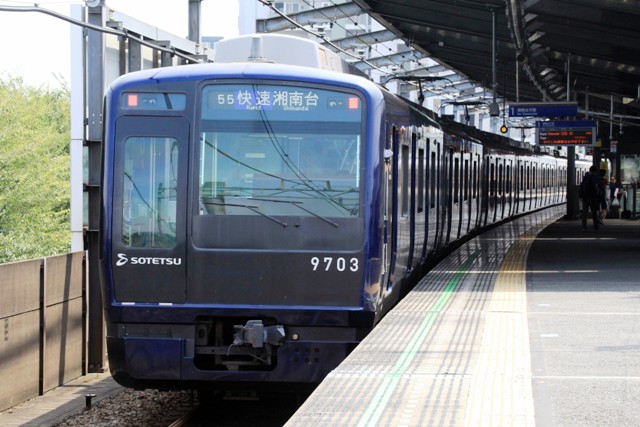I felt like somebody was watching me. I was in a park lying at the foot of Mt. Fuji then. Who was that?
I noticed before long. "He" was a Buffy Fish Owl raised in the park. The formal name of the park is Fuji Kachoen (Fuji Flowers and Birds Park). This species was originally from Malaysia. The species name, Buffy Fish Owl, is from their buffy body color and their most favorite food, namely fish. He was flint-eyed and looked sharply at me in his cage. Am I a fish?
To get to Fuji Kachoen Park, the nearest station is Kawaguchi-ko on the Fujikyu line. Fujikyu is a local railway company in Yamanashi Prefecture. Connecting Otsuki and Kawaguchi-ko (Lake Kawaguchi), its operating length is 23.6 km. The track is single (1,067 mm gauge) and the electric system is 1,500 V DC overhead catenary. Several trains are directly operated onto the JR East Chuo main line through Otsuki Terminal.
The EMU 6000 series is the main fleet on the Fujikyu line. It was originally the EMU JR East 205 series being operated in the Tokyo area. Fujikyu purchased 6 units of the 205 series from JR East in 2012 and modified them to operate on the Fujikyu Line. The standard 6000 series has blue colored bodies with a yellow stripe on the front; however, only one set, namely 6501F, has a red colored body, named Matterhorn. It is because Fujikyu ties up with Matterhorn-Gotthard Railway in Switzerland.
I noticed before long. "He" was a Buffy Fish Owl raised in the park. The formal name of the park is Fuji Kachoen (Fuji Flowers and Birds Park). This species was originally from Malaysia. The species name, Buffy Fish Owl, is from their buffy body color and their most favorite food, namely fish. He was flint-eyed and looked sharply at me in his cage. Am I a fish?
To get to Fuji Kachoen Park, the nearest station is Kawaguchi-ko on the Fujikyu line. Fujikyu is a local railway company in Yamanashi Prefecture. Connecting Otsuki and Kawaguchi-ko (Lake Kawaguchi), its operating length is 23.6 km. The track is single (1,067 mm gauge) and the electric system is 1,500 V DC overhead catenary. Several trains are directly operated onto the JR East Chuo main line through Otsuki Terminal.
The EMU 6000 series is the main fleet on the Fujikyu line. It was originally the EMU JR East 205 series being operated in the Tokyo area. Fujikyu purchased 6 units of the 205 series from JR East in 2012 and modified them to operate on the Fujikyu Line. The standard 6000 series has blue colored bodies with a yellow stripe on the front; however, only one set, namely 6501F, has a red colored body, named Matterhorn. It is because Fujikyu ties up with Matterhorn-Gotthard Railway in Switzerland.



















